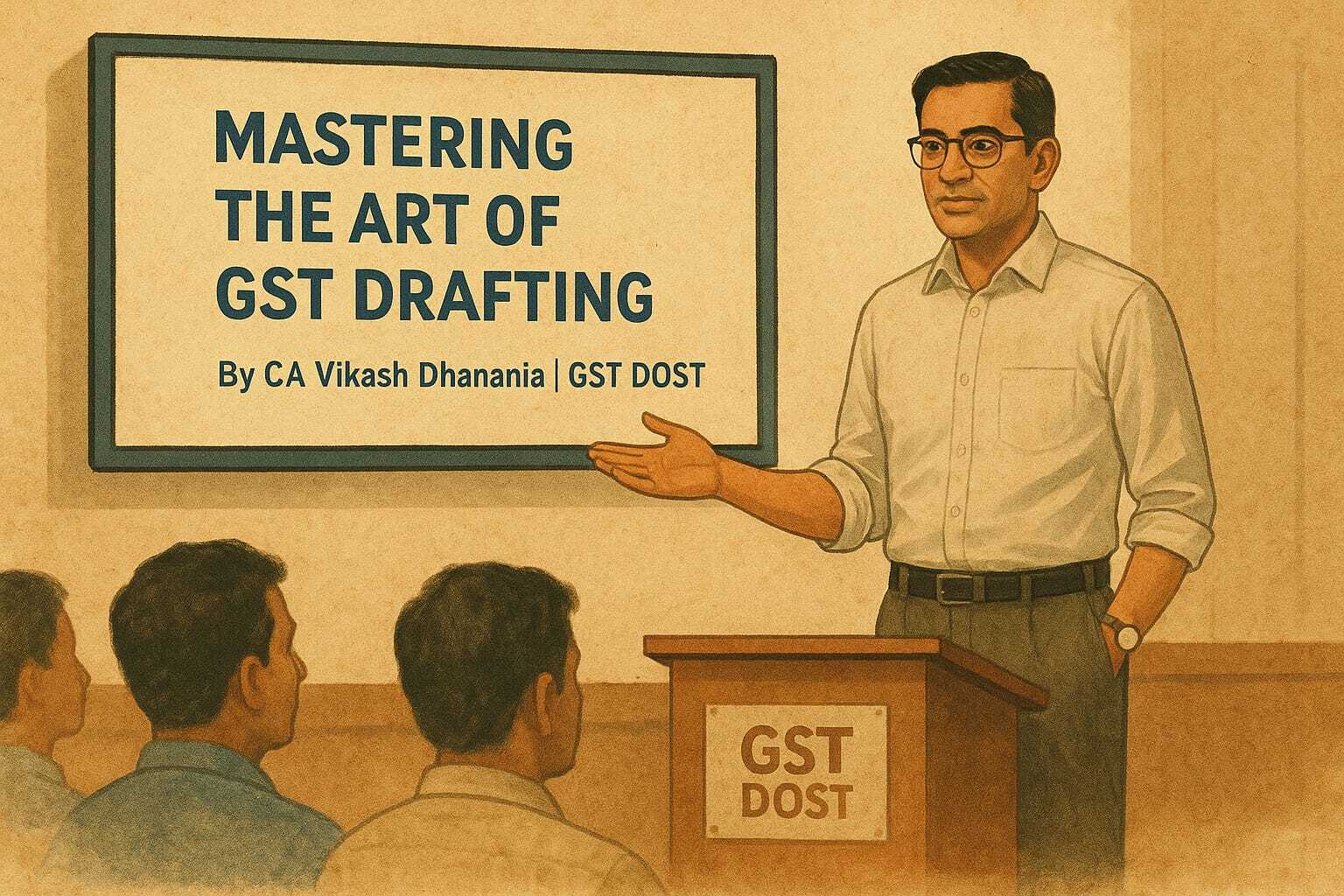"A GST case is often not lost on facts — it is lost on paper."
In GST litigation and compliance, drafting is your defence. Whether it’s a reply to DRC-01 or an appeal before the Commissioner (Appeals), the strength of your argument depends as much on how you write as on what you write. This article outlines a practical, legally sound drafting framework every professional should follow to make their submissions precise, persuasive, and department-ready.
1. Begin with a Clear Subject Line
Use a structured subject like: 'Reply to DRC-01 – ITC Mismatch (FY 2021-22) – GSTIN 19ABCDE1234F1Z2.' A specific subject line instantly tells the officer what the document is about and helps you track the matter in future proceedings.
2. State Your Purpose Up Front
Your opening paragraph should summaries three things:
- What you are requesting – e.g., 'Kindly drop Allegation-2.'
- Why it is lawful – quote the relevant section or rule.
- What evidence you are enclosing – reference annexures clearly.
Busy officers appreciate clarity. A short, structured opening saves everyone time and sets a professional tone.
3. Link Every Fact to Evidence
Avoid generic claims. Instead, link each fact with a document reference. Example: 'Invoice No. 57 dated 20.05.2021 (Annexure A-1) corresponds to E-Way Bill No. 121 dated 21.05.2021.' Such precision builds credibility and makes verification easier.
4. Quote Legal Provisions Correctly
Mention the full statutory reference the first time: 'Section 16(2)(a) of the Central Goods and Services Tax Act, 2017 (CGST Act)'. Later, you can shorten it to 's.16(2)(a)'. Accuracy in citation reflects competence.
5. Verify All Figures Twice
Numbers tell your story. Check that all figures are in Indian format, totals match across GSTR-1, 3B, 2B, and E-Way Bill data, and that all details are consistent. Reconcile before finalizing.
6. Maintain a Neutral, Professional Tone
Avoid emotional words or accusations. Stick to facts → reasoning → relief. Example: Instead of 'the officer wrongly assumed,' write 'the officer appears to have considered only partial data (Annex. B-1).' Professional language earns trust.
7. Present Reliefs in Bullet Form
Each relief should be specific, measurable, and lawful. Example: Drop demand under Allegation-2 (₹ 2,48,013), release of attached bank account, and consider reconciliation statement (Annex. B-1). Avoid vague phrases like 'take necessary action.'
8. Maintain Attachment Hygiene
Label annexures neatly (A-1, A-2…) and save as readable PDFs. Include an Annexure Index for easy reference. If an officer can find a document in under 30 seconds, your draft passes the professionalism test.
9. Use Consistent Formatting and Versioning
Use firm letterhead with correct date, place, and references. Mention versioning and reviewer initials (e.g., v1.2 – Reviewed by AD). This ensures internal control and traceability.
10. Conclude with a Clear Action Request
Close politely but firmly. Mention the mode of submission and next step sought, e.g., 'We request a personal hearing on or after 25.10.2025.' A clear call-to-action keeps proceedings moving efficiently.
Model Reply Format (Snapshot)
Subject: Reply to DRC-01 – ITC Mismatch (FY 2021-22) – GSTIN [____]
To,
The Assistant Commissioner,
State GST Department, [Jurisdiction]
Ref.: SCN No. [____], dated [DD/MM/YYYY]
A. Summary of Submission
- Request to drop Allegation-2 based on reconciliation (Annex. A-1 to A-3).
- Law supports eligibility under s.16(2)(a) and r.36(4).
- Reconciliation and evidentiary documents enclosed.
B. Legal Provisions
Section 16(2)(a) of the CGST Act, 2017 and Rule 36(4) of the CGST Rules, 2017.
C. Reliefs Sought
- Drop the proposed demand.
- Release of attached bank account.
- Any other consequential relief deemed fit.
For [Client Name]
Authorised Signatory
Date: [____] | Place: [____]
Final Takeaway
A GST reply or appeal is not merely a compliance form — it is a legal document that records your version of truth. When you draft with precision, discipline, and clarity, you build a narrative that even the appellate authorities can respect. Structured drafting not only wins cases but also earns you the trust of clients and officers alike.




